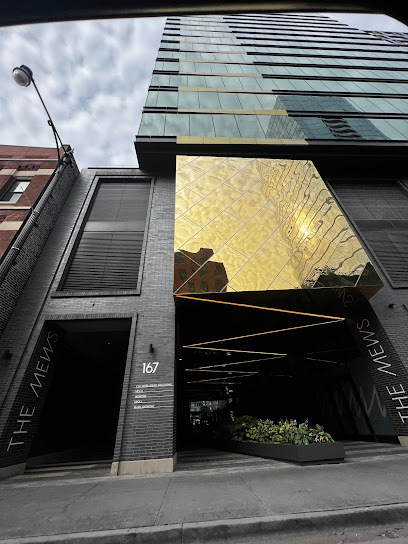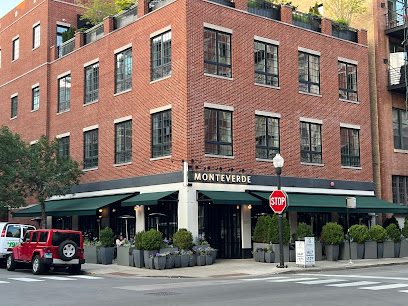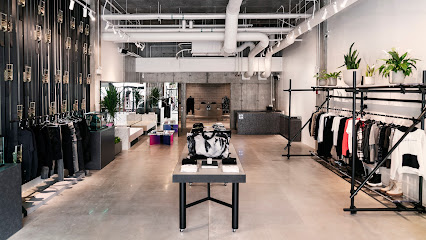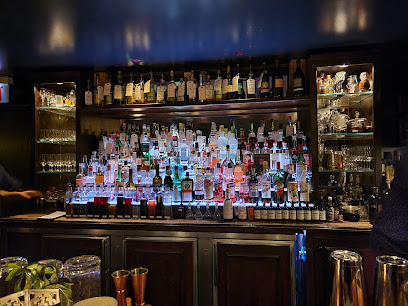
West Loop: Chicago's Culinary and Cultural Gem
Discover West Loop in Chicago: A dynamic neighborhood blending culinary excellence, cultural richness, and modern chic in a historic setting.
West Loop, once an industrial area, has transformed into one of Chicago's most vibrant and trendy neighborhoods. Known for its rich history and modern charm, West Loop offers an eclectic mix of world-class dining, cultural experiences, and stylish boutiques. The neighborhood's streets are lined with beautifully restored warehouses, now home to some of the city’s hottest restaurants and bars, making it a food lover's paradise. One of the highlights of West Loop is the famous Randolph Street, often referred to as 'Restaurant Row.' Here, you can find an array of culinary delights from Michelin-starred restaurants to cozy cafes. Food enthusiasts will revel in the diverse offerings, from gourmet burgers to exquisite sushi. Don't miss out on the neighborhood's vibrant nightlife, where trendy bars and chic lounges provide the perfect setting for an evening out. Beyond its culinary scene, West Loop is also a hub for art and culture. The area boasts several art galleries, showcasing works from both local and international artists. The nearby Fulton Market District is another must-visit spot, blending historic charm with contemporary flair. Whether you're strolling through the farmer's markets, exploring the unique boutiques, or taking in the street art, West Loop promises an unforgettable experience for every traveler.
Local tips in West Loop
- Visit during weekdays to avoid weekend crowds, especially at popular restaurants and bars.
- Make reservations in advance for dining at Michelin-starred or highly popular restaurants.
- Explore the neighborhood on foot to fully appreciate the street art and restored architecture.
- Check out the local farmer's markets for fresh produce and artisanal goods.
- Utilize public transit for easy access to nearby attractions and other parts of Chicago.
West Loop: Chicago's Culinary and Cultural Gem
West Loop, once an industrial area, has transformed into one of Chicago's most vibrant and trendy neighborhoods. Known for its rich history and modern charm, West Loop offers an eclectic mix of world-class dining, cultural experiences, and stylish boutiques. The neighborhood's streets are lined with beautifully restored warehouses, now home to some of the city’s hottest restaurants and bars, making it a food lover's paradise. One of the highlights of West Loop is the famous Randolph Street, often referred to as 'Restaurant Row.' Here, you can find an array of culinary delights from Michelin-starred restaurants to cozy cafes. Food enthusiasts will revel in the diverse offerings, from gourmet burgers to exquisite sushi. Don't miss out on the neighborhood's vibrant nightlife, where trendy bars and chic lounges provide the perfect setting for an evening out. Beyond its culinary scene, West Loop is also a hub for art and culture. The area boasts several art galleries, showcasing works from both local and international artists. The nearby Fulton Market District is another must-visit spot, blending historic charm with contemporary flair. Whether you're strolling through the farmer's markets, exploring the unique boutiques, or taking in the street art, West Loop promises an unforgettable experience for every traveler.
Iconic landmarks you can’t miss
Skydeck Chicago
Discover breathtaking views and thrilling experiences at Skydeck Chicago, the ultimate observation deck in the heart of the Windy City.

The Rookery Building
Discover the architectural wonder of The Rookery Building in Chicago, a historic site blending beauty and history in the heart of the city.

Marquette Building
Discover the Marquette Building, a stunning historical landmark in Chicago Loop, showcasing exquisite architecture and cultural heritage.

The Horse
Explore The Horse, a historical landmark in Chicago's Loop that embodies the city's rich cultural heritage and artistic spirit.

Chicago & Northwestern Powerhouse
Explore the Chicago & Northwestern Powerhouse, a historic landmark showcasing the architectural beauty and rich railway history of Chicago's West Loop.

Vhils Streetart
Explore Vhils Streetart in Chicago's West Loop, a stunning display of urban artistry that tells the story of the city through vibrant murals and intricate carvings.

Site of Former Station Concourse
Explore the Former Station Concourse in Chicago's West Loop, a historical landmark that embodies the city's rich architectural heritage and vibrant culture.

Horses Mural- Hubbard St
Discover the stunning Horses Mural in Chicago's West Loop, a vibrant testament to the city's artistic spirit and cultural heritage.

Illinois State Historical Marker: Mary Bartelme, Illinois' First Female Judge
Uncover the legacy of Mary Bartelme, Illinois' first female judge, at this significant historical marker in Chicago's West Loop.

Unmissable attractions to see
Riverwalk
Experience the beauty and vibrancy of Chicago at the iconic Riverwalk, where stunning views and lively atmosphere meet along the waterfront.

WNDR Museum
Explore WNDR Museum in Chicago for a unique blend of art and interactive experiences that ignite creativity for all ages.

Riverwalk - 100 W
Discover the scenic beauty of Chicago's Riverwalk, an urban oasis with stunning views, dining options, and art along the iconic Chicago River.

Chicago Riverwalk - West End
Experience the beauty of the Chicago Riverwalk - West End with its lush landscapes, dining spots, and stunning views of Chicago's iconic architecture.

Chicago River Walk at State St
Experience the beauty of the Chicago River Walk, a scenic promenade blending nature, dining, and vibrant city life along the iconic Chicago River.

The Mews Pedway
Explore The Mews Pedway: A charming urban walkway in Chicago's Fulton Market, filled with art, dining, and shopping experiences.

Spiral mural
Discover the Spiral Mural in Chicago's West Loop, where art meets urban culture in a vibrant display that embodies the city's creative spirit.

Vhils Streetart
Explore the captivating world of urban art at Vhils Streetart in Chicago's West Loop, where creativity meets city life in stunning displays.

Plaza
Experience the vibrant atmosphere of Plaza in Chicago, a premier tourist attraction blending culture, food, and entertainment in the heart of the city.

Essential places to dine
Girl & The Goat
Experience innovative New American cuisine at Girl & The Goat in Chicago's West Loop—where every dish is a flavorful journey.

Duck Duck Goat
Experience innovative Chinese cuisine at Duck Duck Goat in Chicago's West Loop - where tradition meets modern culinary artistry.

Bar Siena
Discover Bar Siena in Chicago's West Loop - where Italian flavors meet American flair in a vibrant dining experience.

The Publican
Experience the best of American cuisine at The Publican - where fresh seafood meets local flavors in Chicago's vibrant West Loop.

Monteverde Restaurant & Pastificio
Experience authentic Italian flavors at Monteverde Restaurant & Pastificio in Chicago's West Loop—where tradition meets modern culinary artistry.

Roister
Discover the essence of New American cuisine at Roister in Chicago's dynamic West Loop - where culinary innovation meets comfort.

Elske
Discover Elske in Chicago's West Loop: A top-tier New American restaurant blending creativity with seasonal flavors for an unforgettable dining experience.

Black Barrel Tavern
Discover the flavors of America at Black Barrel Tavern in Chicago's West Loop – where great food meets vibrant nightlife.

Next Restaurant
Experience world-class fine dining at Next Restaurant in Chicago's West Loop with seasonal tasting menus that redefine culinary excellence.

SUNNYGUN
Experience American cuisine at its finest in Chicago's West Loop at SunnyGun – where great food meets vibrant atmosphere.

Markets, malls and hidden boutiques
Notre
Explore a curated collection of men's and women's fashion, accessories, and home goods at Notre, Chicago's premier clothing store in the West Loop.

RSVP Gallery
Explore RSVP Gallery in Chicago's West Loop for a unique blend of contemporary fashion and art, showcasing exclusive designs and creative lifestyle products.

SVRN
Explore SVRN in Chicago's West Loop for a curated selection of unique clothing and accessories that set you apart in style.

Uncommon James
Discover unique and stylish jewelry at Uncommon James in Chicago's West Loop, where every piece tells a story and reflects individuality.

The Fig Tree
Discover unique gifts and local treasures at The Fig Tree, a charming gift shop in Chicago's vibrant West Loop neighborhood.

Chicago FOP Gift Shop
Discover unique local memorabilia and gifts at the Chicago FOP Gift Shop in the vibrant West Loop, celebrating community spirit and pride.

Smitten Boutique
Discover unique gifts, charming home goods, and delightful baby items at Smitten Boutique in Chicago's West Loop, perfect for every occasion.

PRIMITIVE
Explore PRIMITIVE in Chicago’s West Loop for exquisite antiques, vintage furniture, and unique art pieces that embody timeless elegance.

Tribeca Boutique
Discover unique fashion finds at Tribeca Boutique, a charming women's clothing store in Chicago's West Loop, offering stylish apparel and accessories.

Love Peridot
Explore Love Peridot, a boutique gift shop offering unique fashion accessories and jewelry, perfect for memorable souvenirs and gifts.

Essential bars & hidden hideouts
Kaiser Tiger
Explore Kaiser Tiger, a vibrant beer garden in Chicago's West Loop, offering delicious food, an extensive beer selection, and unique curling experiences.

The Aviary
Experience the artistry of mixology at The Aviary, Chicago's premier cocktail bar offering exquisite drinks and innovative culinary delights.

Lone Wolf
Experience the vibrant cocktail culture at Lone Wolf, a stylish bar in Chicago's West Loop, offering a unique blend of craft drinks and lively ambiance.

Third Rail Tavern
Discover the lively ambiance and delicious American cuisine at Third Rail Tavern, a must-visit bar and restaurant in Chicago's West Loop.

Lazy Bird
Discover Lazy Bird, a hidden speakeasy-style cocktail bar in Chicago's West Loop, offering innovative drinks in a cozy, stylish atmosphere.

Slightly Toasted
Discover Slightly Toasted, a lively gastropub in Chicago's West Loop, offering innovative dishes and a vibrant atmosphere for food lovers.

The Press Room
Discover The Press Room, a cocktail bar and seafood restaurant offering an exquisite dining experience in Chicago's vibrant West Loop.

Fox Bar
Explore the charm of Fox Bar, a speakeasy-inspired bar in Chicago's West Loop, offering creative cocktails in an inviting atmosphere.

The Office
Discover The Office, Chicago's exclusive speakeasy bar offering a curated selection of cocktails in an intimate, sophisticated atmosphere.

Bunker
Discover Bunker in Chicago's West Loop: A unique bar and restaurant offering craft cocktails, delicious food, and a vibrant atmosphere for tourists.

Local Phrases
-
- HelloHey
[hey] - GoodbyeLater
[lay-ter] - YesYeah
[yeah] - NoNah
[nah] - Please/You're welcomePlease/No worries
[please/no wor-eez] - Thank youThanks
[thanks] - Excuse me/SorryExcuse me/My bad
[excuse me/my bad] - How are you?How's it going?
[hows it go-ing?] - Fine. And you?Good. You?
[good. you?] - Do you speak English?Speak English?
[speak ing-glish?] - I don't understandI don't get it
[I don't get it]
- HelloHey
-
- I'd like to see the menu, pleaseCan I see the menu?
[can I see the menu?] - I don't eat meatI'm vegetarian
[I'm ve-ji-te-ree-an] - Cheers!Cheers!
[cheers!] - I would like to pay, pleaseCheck, please
[check, please]
- I'd like to see the menu, pleaseCan I see the menu?
-
- Help!Help!
[help!] - Go away!Get lost!
[get lost!] - Call the Police!Call the cops!
[call the cops!] - Call a doctor!Get a doctor!
[get a doc-tor!] - I'm lostI'm lost
[I'm lost] - I'm illI'm sick
[I'm sick]
- Help!Help!
-
- I'd like to buy...I want to buy...
[I want to buy...] - I'm just lookingJust browsing
[just brow-sing] - How much is it?How much?
[how much?] - That's too expensiveToo pricey
[too pri-cee] - Can you lower the price?Can you do better?
[can you do bet-ter?]
- I'd like to buy...I want to buy...
-
- What time is it?What time is it?
[what time is it?] - It's one o'clockIt's one
[it's one] - Half past (10)Half past ten
[half past ten] - MorningMorning
[mor-ning] - AfternoonAfternoon
[af-ter-noon] - EveningEvening
[ee-ven-ing] - YesterdayYesterday
[yes-ter-day] - TodayToday
[to-day] - TomorrowTomorrow
[to-mor-row] - 1One
[wun] - 2Two
[too] - 3Three
[three] - 4Four
[four] - 5Five
[five] - 6Six
[six] - 7Seven
[seven] - 8Eight
[ate] - 9Nine
[nine] - 10Ten
[ten]
- What time is it?What time is it?
-
- Where's a/the...?Where's the...?
[where's the...?] - What's the address?What's the address?
[what's the address?] - Can you show me (on the map)?Show me (on the map)
[show me (on the map)] - When's the next (bus)?When's the next (bus)?
[when's the next (bus)?] - A ticket (to ....)One ticket (to ....)
[one ticket (to ....)]
- Where's a/the...?Where's the...?
History of West Loop
-
The West Loop area began as a predominantly industrial district in the late 19th century, benefiting from its proximity to the Chicago Union Station and the railroads that connected the region. Factories and warehouses flourished, supporting the rapid growth of Chicago as a major industrial hub, particularly during the meatpacking boom that positioned Chicago as the 'Hog Butcher to the World.'
-
The Great Chicago Fire of 1871 devastated much of the city, but the West Loop became a focal point for reconstruction. The demand for new buildings led to an architectural renaissance in the late 19th and early 20th centuries, with warehouses and factories constructed in the Chicago School style, characterized by their functional design and use of steel frames.
-
By the late 20th century, the West Loop began experiencing significant gentrification. The area transitioned from an industrial landscape to a vibrant residential neighborhood, with the arrival of restaurants, art galleries, and boutique shops. This cultural shift was exemplified by the development of the Fulton Market District, which transformed into a trendy dining and entertainment destination, while still paying homage to its historical roots.
-
In the 2000s, the West Loop emerged as a culinary hotspot, attracting renowned chefs and restaurateurs. The area is home to several acclaimed establishments, including those that focus on farm-to-table concepts and innovative cuisine. This culinary revolution reflects broader trends in Chicago's food culture, showcasing the city's diverse influences and commitment to culinary excellence.
-
The West Loop hosts various cultural institutions and community events that celebrate its rich heritage. The area is known for its art galleries, theaters, and public art installations, contributing to a vibrant cultural landscape. Events such as the West Loop Art Walk and various food festivals highlight the community’s emphasis on creativity and collaboration, further enriching the neighborhood's cultural tapestry.
West Loop Essentials
-
West Loop is easily accessible from various neighborhoods in Chicago. The most convenient way to reach West Loop is via public transport. If you're coming from downtown, you can take the 'L' train on the Green or Pink line to the 18th or Damen stations. Alternatively, several bus routes, including the #8 Halsted and #20 Madison, connect West Loop with other areas. If you're arriving from O'Hare International Airport, you can take the Blue Line 'L' train to the Damen stop and transfer to the Pink Line to reach your destination.
-
West Loop is a walkable neighborhood, with many attractions located within a short distance. Public transportation options include the 'L' train, with the Pink and Green lines serving the area, as well as several bus routes. Bicycles are also a popular mode of transport, with Divvy bike-sharing stations available throughout the neighborhood. Rideshare services like Uber and Lyft are widely used for convenience. For a more leisurely experience, consider walking or renting a bike to explore the local dining and shopping scene.
-
West Loop is considered a relatively safe neighborhood for tourists. However, like any urban area, it is advisable to remain vigilant, especially at night. Certain areas, particularly near the border with the Near West Side, have seen higher crime rates. Tourists should avoid poorly lit streets and be cautious in less populated areas. Always keep personal belongings secure and be aware of your surroundings.
-
In case of an emergency, dial 911 for immediate assistance. Local hospitals and urgent care clinics are available in West Loop, with the nearest major hospitals being the Rush University Medical Center and the John H. Stroger Jr. Hospital. It is advisable to have travel insurance covering medical emergencies. Pharmacies are also available for minor health issues and over-the-counter medications.
-
Fashion: Do dress comfortably and appropriately for the weather; casual attire is acceptable, but upscale dining may require smart casual. Don't wear overly revealing clothing in restaurants or shops. Religion: Do respect local customs, especially in places of worship. Public Transport: Do be courteous and allow others to exit before boarding. Don't play loud music or engage in disruptive behavior. Greetings: Do greet with a smile and eye contact; a handshake is common. Eating & Drinking: Do try the local cuisine at restaurants and food markets. Don't bring outside food or drinks into establishments.
-
To experience West Loop like a local, visit the Fulton Market area for some of the best dining options that reflect the neighborhood's culinary diversity. Check out the local art scene, including galleries and pop-up exhibitions. Attend a local event or festival if your visit coincides with one, as these often showcase local culture and community spirit. Don't miss the chance to explore the historic architecture, and be sure to take a stroll along the Chicago Riverwalk for stunning views.
Nearby Cities to West Loop
-
Things To Do in Cicero
-
Things To Do in Berwyn
-
Things To Do in Oak Lawn
-
Things To Do in Arlington Heights
-
Things To Do in Schaumburg
-
Things To Do in Bolingbrook
-
Things To Do in Palatine
-
Things To Do in Gary
-
Things To Do in Naperville
-
Things To Do in Joliet
-
Things To Do in Elgin
-
Things To Do in Waukegan
-
Things To Do in Aurora
-
Things To Do in Michigan City
-
Things To Do in Kenosha













